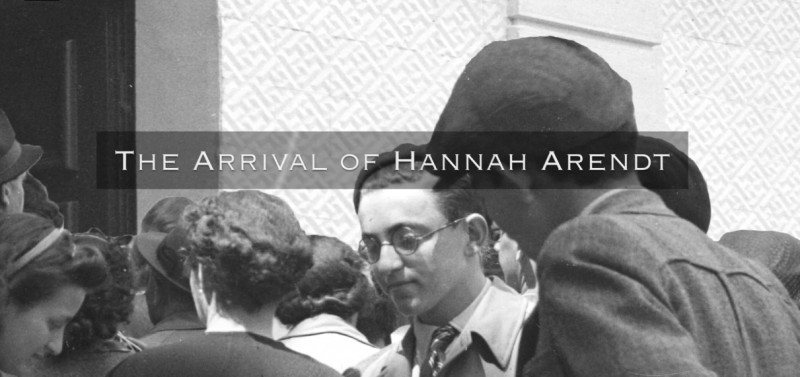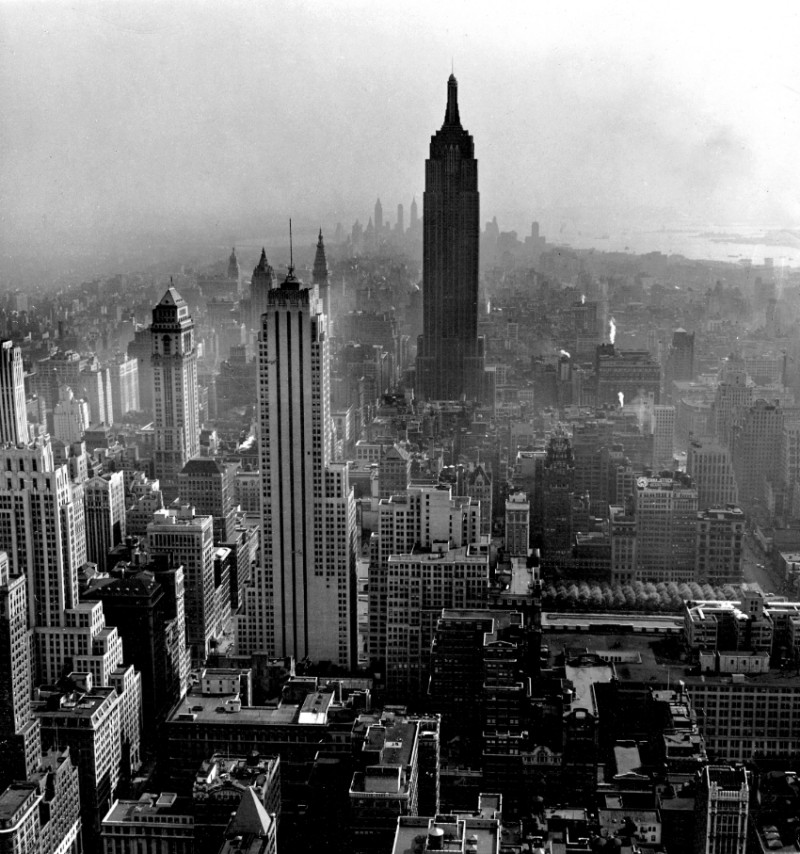
The Arrival of Hannah Arendt
This film describes the arrival of Hannah Arendt - a Jewish, German-American political theorist and publicist - in New York and her reflections on flight and helping people start over.

March 14, 1940
A little Scared
Today was my day to get a little scared, but at least it all ended well. The elevator that took me to the Council of Jewish Charity Women office flew so quickly that my heart skipped a beat when it started to go up. In hell, God forbid, people must also fly this quickly. And when I got upstairs, I saw that I must have made a mistake. There were German and English signs on all the walls, and everybody was speaking German and English. I thought that I’d come to the wrong address and ended up in some German office somewhere.
In the line behind me, there was a woman with very light eyes, definitely not Jewish eyes, and when I asked her what this office was, she answered,“Ich vershteye zi nichs“ (I do not understand you). Here we go, I thought: she speaks so oddly-with ye and ch- that she can’t possibly be a Jew. I wanted to leave and go find the right address. Meanwhile, much to my relief, a thin young woman walked by. She had two little blond curls on her forhead, and around her neck I saw a silver star of David, and in the middle of the star there was a Zion and a little jewel. I was so happy! And I went over to her and said, „Please be so kind and tell me where I can ask about finding a job.“
She glanced at me and said, „In dee liyn, pleez.“ I went to stand in line, and when I got to the front and started to talk to the woman in Yiddish, she smiled sweetly, opened her lips as though she were playing a fife and said, „Soree, Iy don‘ onderstend yu.“ What was I supposed to do? I told her that I wanted to talk to someone who knows Yiddish because I couldn’t speak English. She said something to her neighbor at the next table, and that one shrugged her shoulders. They looked at one another, and then she gave me a piece of paper with the name Eichenbaum on it. I went off to find Miss Eichenbaum, who also smiled at me and sent me off to Miss Rabinowitz and Miss Rabinowitz also smiled and sent me off to Miss Kasher and Miss Kasher read all the names that were written on my piece of paper. I saw that she wanted to laugh, but she just settled on a smile instead and said, „Vayt a minit.“ She went to find someone who spoke Yiddish and then brought me a business card with the name Mrs. Mayofes on it. Mrs. Mayofes asked me lots of questions and took notes: my father’s name, my mother’s name, how many siblings I have, who were my relatives in New York. She wrote it all down and then asked my profeshun. I didn’t know what to tell her. In Lublin, I was a student…and here? I thought about it for a minute and said that I had worked in a laundromat for a week. Mrs. Mayofes seemed really pleased and wrote down: „profession-laundry worker.“ Some profession she crowned me with! She underlined my address in red and told me that they’d mayl a leter.
I was really happy to get away from that „Yiddish“ lady. I ran into my teacher, Sheinfeld, who was surprised to find me there. He asked if I too had been told that they’d send a letter. He laughed. And I saw how thin his face was. „I’ve washed all the spoons,“ he said, and now there’s no work in our factory. It’s worse than awful.“ , he added, and my wife is begging me to bring her over. I’ve been to every organization. They’re good at writing on their typewriters,“ he said and lowered his head. I wanted to tell him about Layzer’s letter, but I saw that he was too worried and I didn’t want to add to his concerns by piling on my own.
The author of the novel “A Jewish Refugee in New York” Kadya Molodovsky is one of the most important Yiddish poets of the mid-20th century. She was born in 1894 in Bereza Kartuska, Russian Empire and experienced the typical trajectory of Jewish migration of the 20th century: Odessa, Kyiv, Warsaw, New York, Tel Aviv. In the course of life she worked as a teacher, editor, poet, critic, playwright and writer. When World War I broke out, she worked in a day home for Jewish children who had fled, run by her teacher in Warsaw. She continued this work in various places until 1917. Later she moved to Odessa to escape the war front and worked in a kindergarten there. In 1917, after the October Revolution, she could not return to her parents, and so remained in Kyiv, where she again took a job as a kindergarten teacher. Surviving the pogrom in Kyiv in 1920, she published her first poem.
In 1935 she moved to New York, where she published her book “In Land fun Mayn Gebayn” (“In the Land of My Bones”). In it, she addresses the internalization of exile in fragmentary poems. From this point on, her work in New York flourished.
In her work “A Jewish Refugee in New York,” Kadya Molodowsky presents the life of Rivke Zilberg, a twenty-year-old refugee from Lublin in New York, in the form of a diary. Rivke Zilberg’s experiences have a certain similarity with Molodovsky’s fate. The diary covers such topics as: Flight, arrival, Holocaust, acculturation and more.
Kadya Molodovsky (translated by Anita Norich), 2019: A Jewish Refugee in New York. A Novel by Kadya Molodovsky. Bloomington: Indiana University Press, p. 43-44.